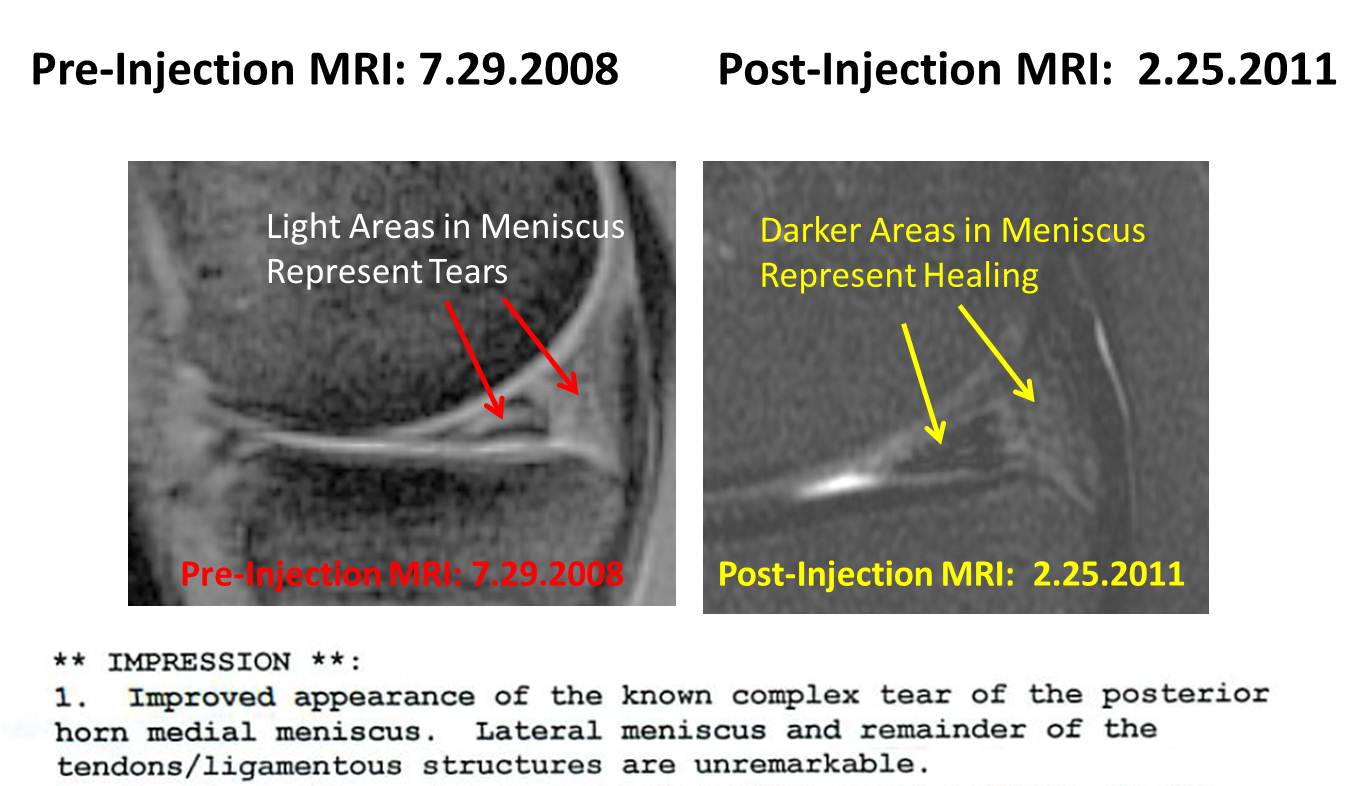Successful Treatment of Another Meniscus Tear with Stem cells
DG is a 41 year old male with a 3 year history of knee pain who injured his medial meniscus while roller blading in Chicago. He had no surgery and was limping when he was first seen at our clinic. On exam he had instability of the ACL ligament (his main stabilizing ligament in the knee was loose) with a very macerated (torn in many areas) meniscus. He wanted to avoid arthroscopic knee surgery because he had heard that cutting out pieces of the meniscus could cause more arthritis down the road. As discussed before, just placing stem cells into the joint without adressing the joint instability was unlikelky to help. This is because his lax ACL ligament was allowing shear forces to chew up the meniscus (see our practice’s book Orthopedics 2.0 for more discussion). So we treated his ACL, using injections directly into the ligament on fluoroscopy. We also eventually treated his medial meniscus with the Regenexx-C procedure (early 2009), using our exact placement techniques to put the stem cells in the area of the tears. He now reports 85% improvement and just completed a 3 day snowboarding trip. We also have had the opportunity to compare his before and after MRI’s. Above is the radiology reading stating that there has been improvement in the medial meniscus that was treated. The picture on the left was taken 9 months before the stem cell injection into the knee meniscus. Note the light areas in the triangle shaped meniscus that represent weak areas and tears. The right picture was taken 22 months after the stem cell injection-note the darker appearance of the meniscus with less of the light areas representing weakness and tears. It should also be noted that when we began treatment, he had an “end stage” meniscus, meaning literally that it was “on it’s last legs” with multiple tears (macerated). With this many meniscus tears, a surgeon would have to remove all of the meniscus tissue if the patient underwent a menisectomy. In addition, this type of meniscus doesn’t get better on it’s own, it only heads one way-toward more fragmentation and degeneration. As a result, in all likelihood the patient started our therapy as a young candidate for a partial knee replacement surgery. We have published on these MRI changes seen in the knee meniscus with the Regenexx-C stem cell procedure, click here for PubMed abstract. Also, it’s important to note that all patients where we have treated the knee meniscus with cultured stem cells don’t get these same results.

NOTE: This blog post provides general information to help the reader better understand regenerative medicine, musculoskeletal health, and related subjects. All content provided in this blog, website, or any linked materials, including text, graphics, images, patient profiles, outcomes, and information, are not intended and should not be considered or used as a substitute for medical advice, diagnosis, or treatment. Please always consult with a professional and certified healthcare provider to discuss if a treatment is right for you.

